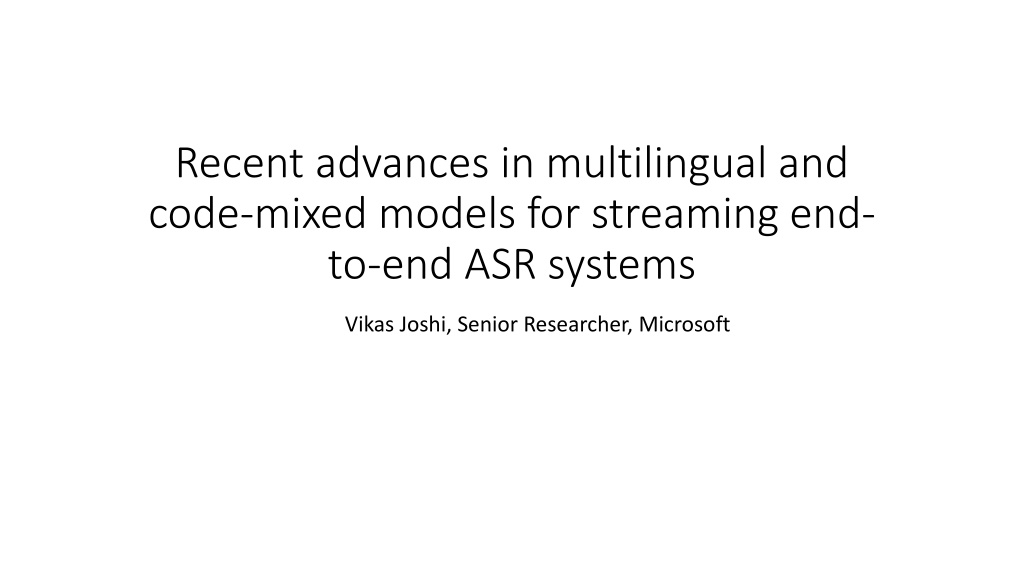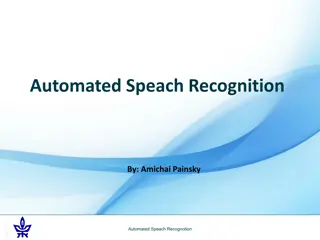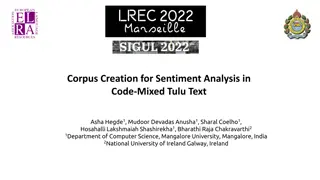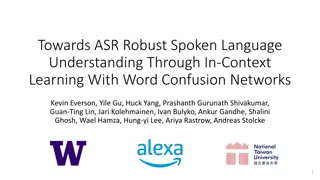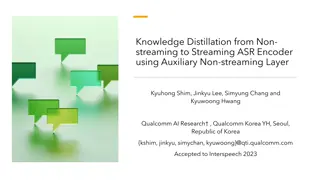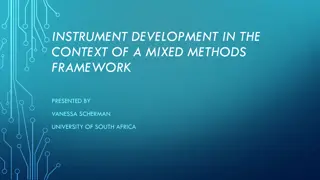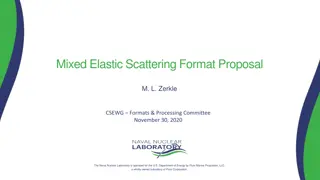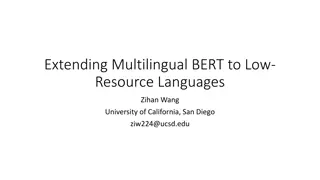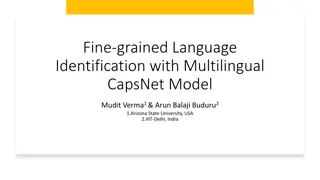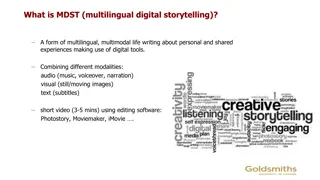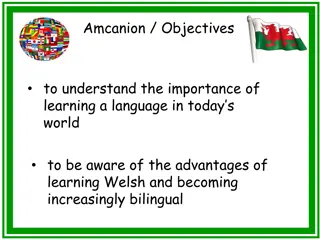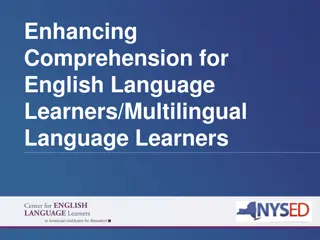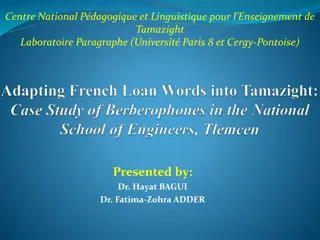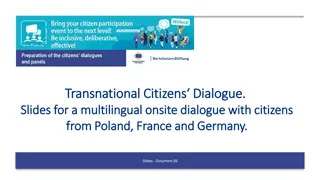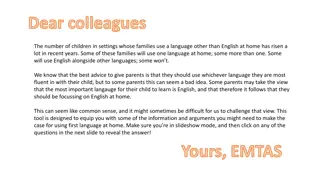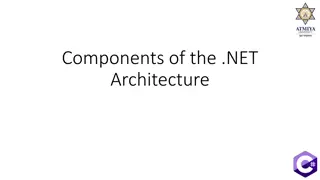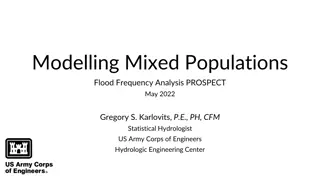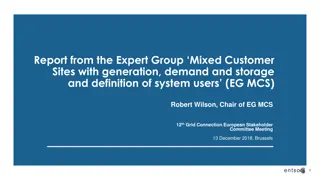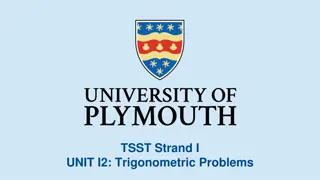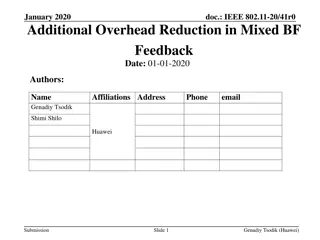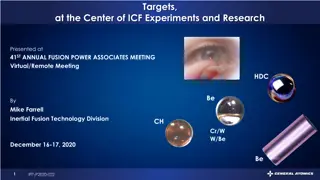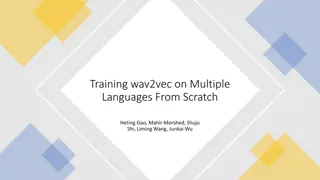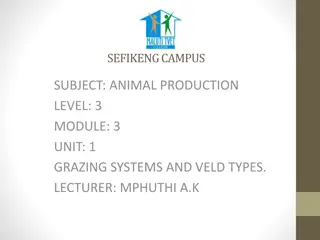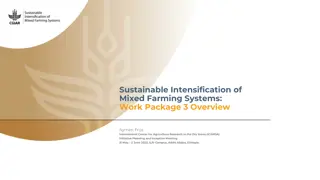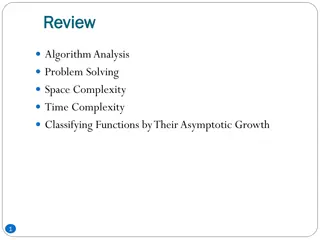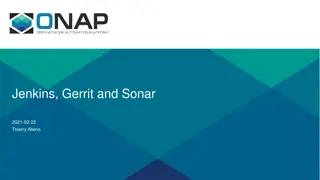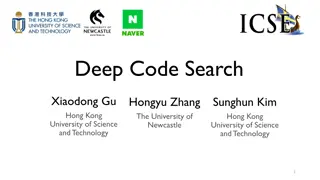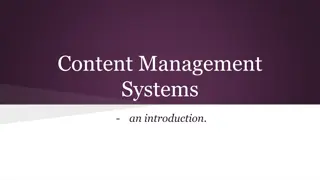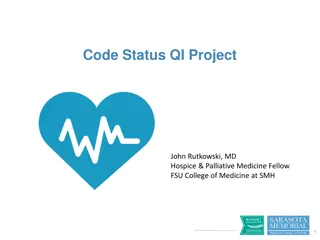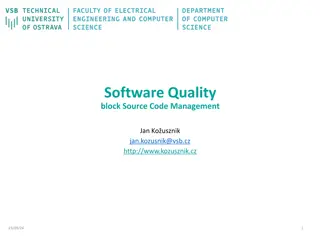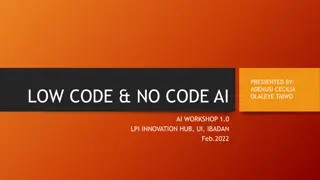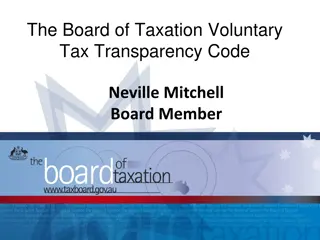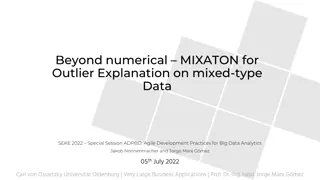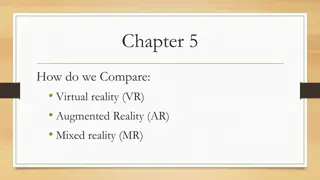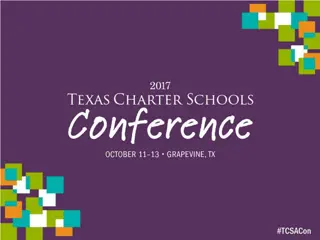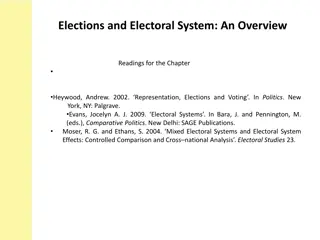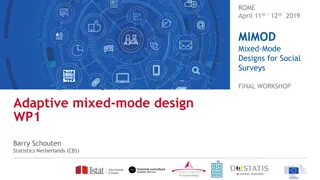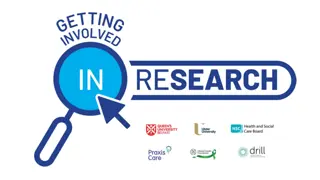Challenges and Advances in Multilingual and Code-Mixed ASR Systems
Recent advances in multilingual and code-mixed models for streaming end-to-end ASR systems present challenges including low resource Indic language data, multiple dialects, code-mixing, and noisy environments. These challenges impact ASR modeling by causing convergence issues, higher Word Error Rate on low-resource languages, and the need for a single Language ID (LID)-free multilingual model. Various methods such as continual learning and specialized code-mixing approaches are explored to address these challenges and improve model performance.
Uploaded on Sep 27, 2024 | 0 Views
Download Presentation

Please find below an Image/Link to download the presentation.
The content on the website is provided AS IS for your information and personal use only. It may not be sold, licensed, or shared on other websites without obtaining consent from the author. Download presentation by click this link. If you encounter any issues during the download, it is possible that the publisher has removed the file from their server.
E N D
Presentation Transcript
Recent advances in multilingual and code-mixed models for streaming end- to-end ASR systems Vikas Joshi, Senior Researcher, Microsoft
Challenges in Indic language data Low resource, multiple dialects, code-mixing, noisy, multiple langauges Transfer Learning 2-stage TL Multilingual TL Outline Multilingual RNN-T models Multilingual vanilla vs 1hot vs multisoftmax LID-free multi-softmax models Continual learning methods
Challenges in Indic language data American English: 100K 200K hours European languages: 20K 50K hours Indian languages: < 10 K hours Relatively smaller amount of training data
Challenges in Indic language data Relatively smaller amount of training data Multiple dialects 22 official languages 546+ dialects From https://en.wikipedia.org/wiki/List_of_languages_by_number_of_native_speakers_in_India
Challenges in Indic language data Relatively smaller amount of training data Type of Utts Hi-IN En-IN Multiple dialects Monolingual 22% 84% Code-mixed 78% 16% Higher code-mixed data
Challenges in Indic language data Relatively smaller amount of training data Multiple dialects Higher code-mixed data Noisy data
How do they affect the ASR modeling? Convergence issues Higher WER on low resource languages Higher WER on CM and noisy utts Need for a single LID-free multilingual model Maintain multiple models
Explored methods Continual learning and Specialized CM methods for CM Multilingual Training Data Transfer learning augementation Leverage data Better convergence Modeling convenience LID-free models Code-mixing is treated as new task Specialized model architectures conducive for CM scenarios LM data generation TTS based data generation Leverage data Better convergence
RNN-T model Output Post processing <space> Hybrid vs RNNT models: ?(?|?, ?) Parameter Hybrid production models RNNT models Joint Network Model size ~3 GB 50 Mb (including the runtime) Deployment Cloud On-device, Cloud Prediction network Encoder Internet dependency Yes No Personalization, custom grammar support Yes limited ?? ?? ? Accuracy Comparable Comparable Previously predicted label Acoustic feature extraction Model simplicity Fairly complex: AM, n-gram LM, Lexicon, G2P, others Single neural model Input RNNT model architecture
2-stage TL for RNN-T Grapheme targets Senone targets CE loss RNNT loss TL done in 2 stages ?(?|?, ?) First, Hindi CE model is trained by TL from Joint Network Joint Network Joint Network en-US CE model Subsequently the Hi-IN RNNT model is Encoder Encoder Prediction network Encoder trained by TL from Hi-IN CE model Hi-IN CE model is trained with either Grapheme or senone targets ?? 1 Hi-IN Acoustic feature extraction en-US Acoustic feature extraction Hi-IN Acoustic feature extraction *Vikas Joshi, Rui Zhao, Rupesh R. Mehta, Kshitiz Kumar, Jinyu Li, Transfer Learning Approaches for Streaming End-to-End Speech Recognition System , Interspeech 2020
Multilingual seed model 1. Multilingual seed 2. Text-to-text mapping 3. TTS data Indic language family Trained with CE loss Ta-IN Mr-IN En-IN Hi-IN Gu-IN Te-IN Hi-IN Encoder Encoder Network En-IN Hi-IN Ta-IN Te-IN Mr-IN Gu-IN Manuel Giollo, Deniz Gunceler, Yulan Liu, Daniel Willett Bootstrap an end-to-end ASR system by multilingual training, transfer learning, text-to-text mapping and synthetic audio , Interspeech 2021
Story so far Challenges: Convergence; Higher WER on low resource, CM, noisy; LID free models; Maintenance 2-stage TL and multilingual-seed based TL helps improve WER and faster convergence. Data augmentation helps in certain conditions
Multilingual models Key tenets: Build a multilingual seed model Better convergence Faster training Easy maintenance LID-free multilingual model No need to know the input language
Multilingual models (Vanilla & 1hot) Output probabilities over all symbols Output probabilities over all symbols Joint Network Joint Network Vanilla model is multilingual, LID-free, streaming 1hot is multilingual and streaming (not LID-free) Prediction Network Encoder Network Prediction Network Encoder Network 1 0 0 0 0 Feature extraction Label extraction Embedding Feature extraction ?? 1 ?? 1 En- IN Hi- IN Ta- IN En- IN Hi- IN Ta- IN Mr- IN Mr- IN Gu- IN Gu- IN A. Kannan, A. Datta, T. N. Sainath, E. Weinstein, B. Ramabhadran, Y. Wu, A. Bapna, Z. Chen, and S. Lee, Large-scale multilingual speech recognition with a streaming end-to-end model, Interspeech 2019.
MultiSoftmax model Vikas Joshi, Amit Das, Eric Sun, Rupesh R. Mehta, Jinyu Li, Yifan Gong, Multiple Softmax Architecture for Streaming Multilingual End-to-End ASR Systems , Interspeech 2021.
MultiSoftmax as seed model RNNT loss Hi-IN sym Hi-IN + Prediction Network Encoder Network Hi- IN Label extraction Feature extraction ?? 1 Hi-IN
LID-free MultiSoftmax ? 1 ? ???????=1 RNNT loss CE loss ???? ?? ? ? ?=0 ?? Gu-IN sym En-IN sym Hi-IN sym Ta-IN sym LID- Sym ?=1 ?????????= ????????+ ? ??????? En-IN Hi-IN Ta-IN Gu-IN LID-FC ?-> Number of frames in minibatch ? -> Number of classes ? -> Set to 1.0 in our experiments + Prediction Network Encoder Network Just speak in any supported language! Streaming! No language information needed! LID loss updates the encoder parameters as well, along with LID specific matrix All decoders run in parallel Can be optimized with minimal loss in accuracy Encoder forward pass is done only once! Inference: Estimate langauge for each frame and chose the language classified for maximum number of frames. Mr- IN Gu -IN Ta- IN En- IN Hi- IN Label extraction Feature extraction ?? 1 En- IN Hi- IN Ta- IN Mr- IN Gu- IN
LID with early stopping Switch of some of the decoders early LID models says, it is less likely to be language X We stop the decoder for X What ? ??? = ? =0 Turn off criterion (AND): ? > ? ??? < ??_??? (?) ?? log(?? (?)) LID confidence for lang l How? Minimum wait time ?? ? (Average time a decoder was ON) ????? ????=?? ????= ? Metrics
LID with early stopping Encoder computations are done only once Each beam search is done on a subset of symbols (unlike union of symbols in vanilla and onehot)
Other LID-free multilingual models Surabhi Punjabi , Harish Arsikere , Zeynab Raeesy, Chander Chandak, Nikhil Bhave, Ankish Bansal , Markus Muller, Sergio Murillo, Ariya Rastrow, Sri Garimella, Roland Maas, Mat Hans, Athanasios Mouchtaris, Siegfried Kunzmann JOINT ASR AND LANGUAGE IDENTIFICATION USING RNN-T: AN EFFICIENT APPROACH TO DYNAMIC LANGUAGE SWITCHING , ICASSP 2021
Story so far Challenges: Convergence; Higher WER on low resource, CM, noisy; LID free models; Maintenance 2-stage TL and multilingual-seed based TL helps improve WER and faster convergence. Data augmentation helps in certain conditions Vanilla, 1hot and Multisoftmax multilingual models improve over monolingual baselines LID-free multisoftmax models improve over vanilla models. Fewer studies done so far
Code mixed speech recognition Often see higher WER for code-mixed utterances compared to monolingual utterances Most research focus on code-mixed scenario and not worry about monolingual scenario In practice, ASR model should do well of both monolingual and code-mixed utterances Our scenario: Have access to both monolingual and code-mixed data Explore methods so that we do well on both monolingual and code-mixed data Brady Houston, Katrin Kirchhoff Continual Learning for Multi-Dialect Acoustic Models , Interspeech 2020 Gurunath Reddy M, Sanket Shah, Basil Abraham, Vikas Joshi and Sunayana Sitaram, Learning Not to Discriminate: Task Agnostic Learning for Improving Monolingual and Code-switched Speech Recognition , Code- switching workshop, Interspeech 2020
Approaches explored Monolingual model Model trained with only monolingual data Code-mixed model Model trained with only code-mixed data Pooled model Model trained with monolingual and code-mixed data Fine tuning methods including KL-divergence regularization Continual learning methods: Explored Learning Without Forgetting (LWF) to learn code-mixed task without forgetting monolingual task ?? ,?? ??, ??, ??? ?, ?? ??, ?? ?+ ? ?? ??} ,??? arg max {? ?? 1. Gurunath Reddy M, Sanket Shah, Basil Abraham, Vikas Joshi and Sunayana Sitaram, Learning Not to Discriminate: Task Agnostic Learning for Improving Monolingual and Code-switched Speech Recognition , Code-switching workshop, Interspeech 2020 2. Sanket Shah, Basil Abraham, Gurunath Reddy M, Sunayana Sitaram, Vikas Joshi, Learning to Recognize Code-switched Speech Without Forgetting Monolingual Speech Recognition , arXiv:2006.00782
Approaches in a nutshell Codemixed target (pooled) Codemixed target (pooled) Monolingual target Code-mixed target Pooled target Code-mixed target Code-mixed target Code-mixed target Monolingual vs codemixed FC with softmax FC with softmax FC with softmax FC with softmax FC with softmax FC with softmax FC with softmax FC with softmax FC with softmax GRU LSTM - 6 LSTM - 6 LSTM - 6 LSTM - 6 LSTM - 6 LSTM - 6 LSTM - 1 LSTM - 1 LSTM - 1 LSTM - 1 LSTM - 1 LSTM - 1 Monolingual acoustic data Code-mixed acoustic data Pooled acoustic data Code-mixed acoustic data Code-mixed acoustic data Code-mixed acoustic data Monolingual training Code-mixed training Fine-tuning training (with KLD) LWF Adversarial LWF Pooled training
Results Language - Tamil 217 hours of monolingual training data 177 hours of code-mixed training data 24 hours of monolingual test data 19 hours of code-mixed test data Model Monolingual WER Code-mixed WER Monolingual model 45.81 62.73 Code-mixed model 66.11 58.63 Pooled model 44.42 50.92 Fine tuning 46.62 48.63 LWF 44.72 50.57 Adversarial LWF 44.31 50.12
Story so far 2-stage TL and multilingual seed-based TL helps Vanilla, 1hot and Multisoftmax multilingual models improve over monolingual baselines LID-free multisoftmax models improve over vanilla models. Very few LID-free multilingual models studied Continual learning methods show promise
What is still missing? Multilingual models need to know the language before hand Code-mixing is still not handled well Difficult to scale to multiple langauges Training convergence issues All specialized architecture do not show extend gains when trained on large data
Speech applied science team @ Microsoft, India 14-member team - 3 PhD, 11 Masters Areas of focus: Acoustic modeling Language modeling Text to speech E2E speech recognition 3 accepted papers at Interspeech 2020 and a workshop paper at Code-mixed workshop, Interspeech 2020, 1 paper at Interspeech 2021
